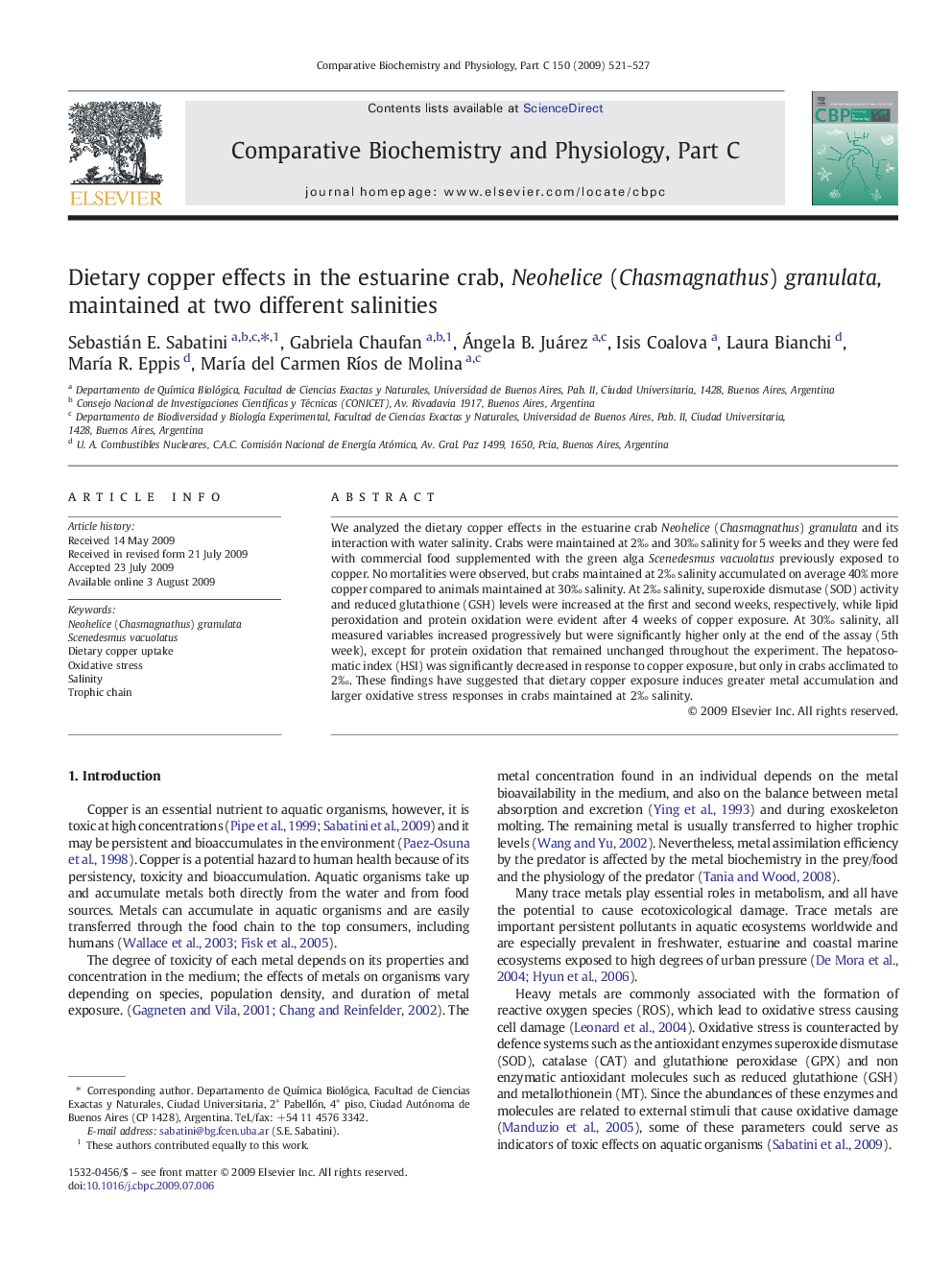| Article ID | Journal | Published Year | Pages | File Type |
|---|---|---|---|---|
| 1977725 | Comparative Biochemistry and Physiology Part C: Toxicology & Pharmacology | 2009 | 7 Pages |
We analyzed the dietary copper effects in the estuarine crab Neohelice (Chasmagnathus) granulata and its interaction with water salinity. Crabs were maintained at 2‰ and 30‰ salinity for 5 weeks and they were fed with commercial food supplemented with the green alga Scenedesmus vacuolatus previously exposed to copper. No mortalities were observed, but crabs maintained at 2‰ salinity accumulated on average 40% more copper compared to animals maintained at 30‰ salinity. At 2‰ salinity, superoxide dismutase (SOD) activity and reduced glutathione (GSH) levels were increased at the first and second weeks, respectively, while lipid peroxidation and protein oxidation were evident after 4 weeks of copper exposure. At 30‰ salinity, all measured variables increased progressively but were significantly higher only at the end of the assay (5th week), except for protein oxidation that remained unchanged throughout the experiment. The hepatosomatic index (HSI) was significantly decreased in response to copper exposure, but only in crabs acclimated to 2‰. These findings have suggested that dietary copper exposure induces greater metal accumulation and larger oxidative stress responses in crabs maintained at 2‰ salinity.
